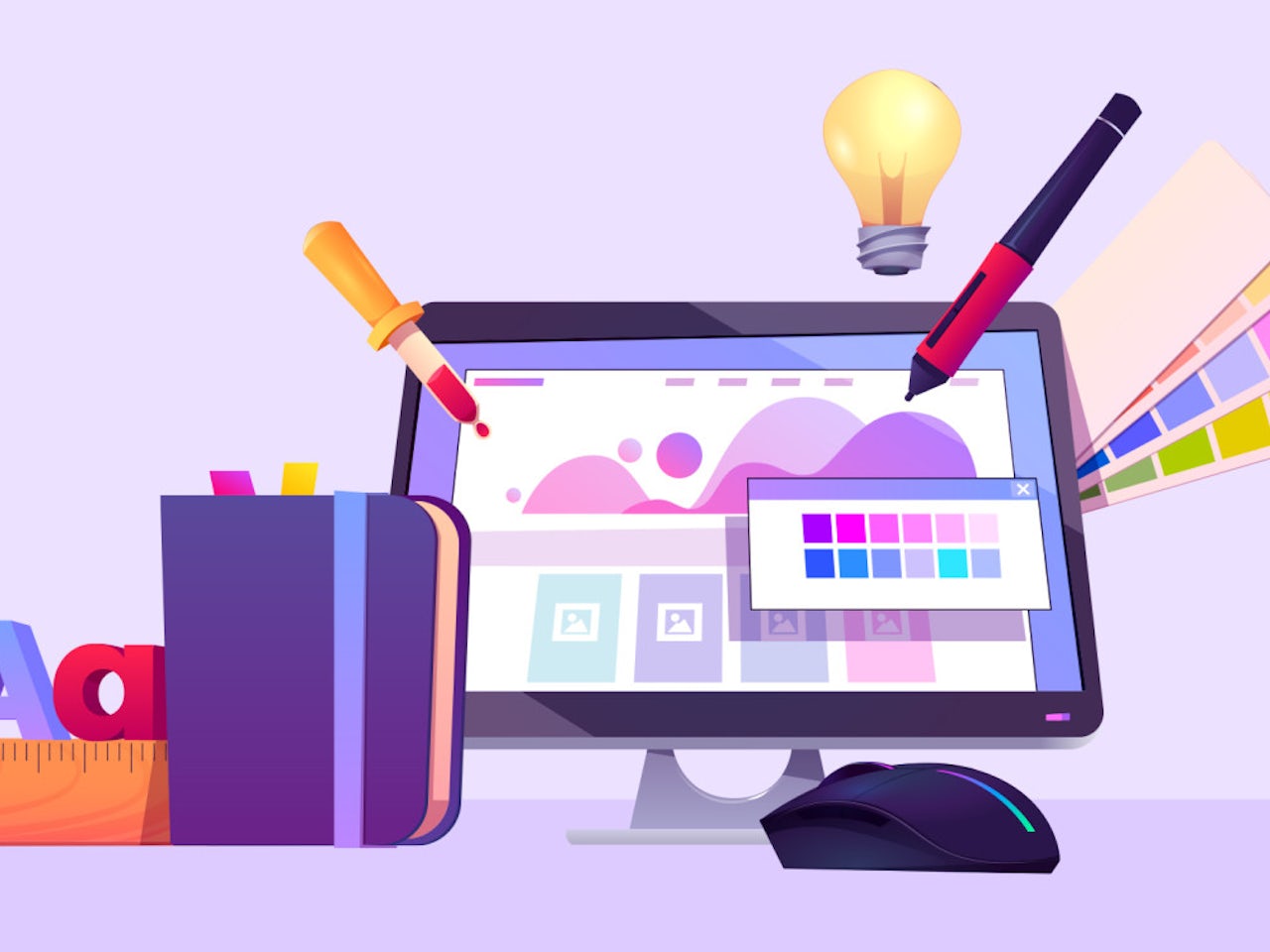The Relevance of User Experience in Reliable Web Design Techniques
User experience (UX) acts as a foundation in efficient web design approaches. It forms how users connect with a website, influencing their fulfillment and likelihood of returning. A properly designed UX can improve involvement via intuitive navigation and responsive formats. Overlooking these elements may lead to aggravation and raised bounce prices. Understanding the intricacies of UX is essential for developers aiming to create compelling electronic experiences that reverberate with diverse audiences. What variables genuinely drive successful user engagement?
Understanding User Experience and Its Influence On Layout
Although user experience (UX) is usually viewed as a plain element of web design, it essentially shapes just how individuals interact with an internet site. UX encompasses all aspects of the user's communication, including use, ease of access, and total satisfaction. A favorable UX fosters involvement, motivating individuals to discover the site and return in the future. Conversely, an adverse experience can cause disappointment, leading to high bounce prices and lost possibilities for conversion.
Style components like navigating, layout, and material organization play critical duties fit this experience. Efficient UX style prepares for user needs and choices, guaranteeing that information is visually attractive and quickly obtainable. Additionally, recognizing user habits with analytics can provide valuable understandings, notifying style decisions that enhance use. Inevitably, a detailed understanding of UX permits developers to produce sites that not just attract customers however also advertise purposeful interactions that align with business objectives and user assumptions.
Key Concepts of Reliable User Experience
Effective user experience rests on numerous crucial concepts that enhance website performance and involvement. Intuitive navigating style, responsive format fundamentals, and the value of visual power structure are important aspects that contribute to a seamless communication between users and web material. Comprehending these concepts allows developers to develop more accessible and easy to use electronic environments.
Intuitive Navigation Design
When users experience a site, intuitive navigating style serves as a vital entrance to their general experience. Reliable navigating allows individuals to easily situate the info they look for, boosting their communication with the site. Trick concepts consist of clear labeling, sensible organization, and consistent placement of navigating components. Tags ought to be simple, allowing users to forecast the web content they will discover. A well-structured pecking order aids customers understand the partnership between various areas, guiding them through the website flawlessly. Additionally, receptive food selections and conveniently accessible web links add to a liquid experience across tools. By focusing on instinctive navigating, designers can considerably decrease user frustration and rise engagement, inevitably fostering a favorable perception of the internet site and its material.
Receptive Design Basics
A well-structured navigation system normally brings about the need for a responsive layout, which is crucial in today's varied electronic landscape. A receptive layout assurances that websites feature perfectly across numerous gadgets, consisting of tablets, smart devices, and desktops. This versatility boosts user experience by enabling web content to be easily available and visually meaningful, regardless of screen dimension. Secret concepts of receptive layout consist of fluid grids, adaptable images, and media queries, which promote optimal watching. In addition, focusing on touch-friendly components boosts interaction on smart phones. By executing a receptive format, designers can suit customers' demands, reduce bounce prices, and increase engagement. Eventually, a well-executed responsive style cultivates a positive user experience, encouraging visitors to explore the site further.
Visual Power Structure Relevance
Visual hierarchy plays a necessary role in assisting users through a web site, making sure that important info records their attention first. By tactically utilizing dimension, comparison, spacing, and color, developers can produce a clear path for individuals to follow. Bigger components typically draw the eye, indicating their significance, while contrasting shades can highlight calls to activity. Furthermore, regular placement and grouping of related web content enhance comprehension, making navigating user-friendly. Reliable use visual pecking order not just improves usability however likewise sustains the general aesthetic of the website, fostering a positive user experience. When users can easily recognize one of the most important information, they are more most likely to involve with the web content, leading to raised complete satisfaction and communication with the web site.
The Duty of Functionality in Web Design
Usability plays a necessary function in web design, particularly through navigation simplicity and adherence to availability criteria. Reliable navigation enhances user fulfillment by permitting visitors to locate info swiftly and with ease. Conference availability criteria assures that all customers, regardless of their abilities, can efficiently communicate with the site.
Navigation Simpleness
Simplicity in navigation stands as a foundation of efficient web design, considerably affecting user experience. A streamlined navigation system enables users to discover info promptly and with ease, minimizing irritation and enhancing contentment. Clear labeling and rational framework are crucial aspects, leading customers effortlessly with the website. Repetitive links or overly complicated menus can confuse users, bring about raised bounce rates. Furthermore, mobile responsiveness must be considered, ensuring navigating remains uncomplicated throughout tools. Prioritizing important web pages and lessening clutter further supports user engagement. Effective navigating not only fosters a positive experience however additionally encourages customers to check out the website better, ultimately leading to greater conversion rates. Hereof, navigating simplicity works as a critical element in the general effectiveness of web design techniques.
Accessibility Standards
User engagement is substantially boosted when internet sites abide by access criteria, guaranteeing that all customers, despite their abilities, can navigate and engage effectively. Compliance with these standards not only broadens the audience but additionally improves general user complete satisfaction. Available style integrates functions such as text alternatives for images, keyboard navigation, and enough color contrast, which facilitate usage by individuals with specials needs. Additionally, executing these standards can favorably affect search engine optimization (SEARCH ENGINE OPTIMIZATION) by enhancing website framework and clearness. As web design advances, prioritizing ease of access becomes important in promoting a comprehensive electronic atmosphere. By accepting these criteria, designers add to a much more fair internet, inevitably driving user commitment and involvement.
Relevance of Responsive Design for User Involvement
As consumers progressively accessibility internet sites see this site through a variety of tools, the relevance of receptive design comes to be paramount for involving customers properly. Receptive style warranties that a web site adjusts flawlessly to different screen dimensions, giving an optimal viewing experience no matter the device made use of. This versatility boosts user involvement by assisting in less complicated navigation and communication with material.
When individuals run into a site that is receptive, they are most likely to remain much longer, explore better, and return in the future. A properly designed receptive design decreases the frustration frequently related to scrolling and zooming on smaller sized screens, consequently lowering bounce rates. Additionally, responsive style can positively affect online search engine rankings, as online search engine prioritize mobile-friendly web sites. In today's electronic landscape, where mobile use proceeds to increase, implementing receptive design is not simply helpful, but necessary for keeping user interaction and ensuring a positive experience throughout all devices.
Enhancing Load Times for Better User Contentment

To improve tons times, internet developers must focus on maximizing photos, leveraging web browser caching, and reducing HTTP demands. In addition, employing Material Shipment Networks (CDNs) can expedite content distribution by distributing it throughout various geographical areas. Streamlining code, such as pressing CSS and JavaScript data, even more adds to faster filling rates.
Inevitably, a dedication to enhancing tons times not just increases user satisfaction however additionally enhances brand name commitment and improves the likelihood of repeat sees. A swift, seamless experience is crucial for maintaining customers and fostering positive interactions.
The Influence of Visual Hierarchy on User Communication
Visual pecking order works as a vital element in guiding user communication on an internet site. By organizing content in a manner that focuses on details visually, designers can influence just how individuals browse and involve with a website. This pecking order is developed with numerous layout methods, including size, comparison, shade, and spacing. Larger font styles or strong colors draw attention to critical aspects, such as calls to activity or headings, while suppressed shades and smaller typefaces can show subservient details.
Reliable aesthetic power structure assists individuals promptly recognize what is most essential, minimizing cognitive lots and boosting use. It permits instinctive navigating, making it easier for individuals to find what they need without stress. As users interact with a web site, a well-structured aesthetic hierarchy cultivates an extra enjoyable experience, inevitably causing greater engagement and conversion rates. Designers need to focus on these principles to produce a effective and user-centered internet atmosphere.
Measuring User Experience: Tools and Strategies

Regularly Asked Concerns
Just How Can I Improve My Site's User Experience on a Spending plan?
To enhance a website's user experience on a budget plan, one can optimize web page load rate, simplify navigation, implement responsive style, enhance material clearness, and collect user feedback for continuous improvements, making sure a satisfying site visitor experience.
What Are Usual User Experience Blunders to Avoid in Web Design?
Common user experience errors in web design include messy designs, bad navigating, slow-moving loading times, absence of mobile responsiveness, ignoring ease of access, inconsistent branding, and stopping working to focus on user comments - Website Design Agency. Each can significantly impede overall website efficiency
Exactly how Typically Should I Update My Internet Site for Better User Experience?
Sites need to be updated frequently, preferably every couple of months, to maintain excellent user experience. Regular updates assist address functionality concerns, refresh material, and adapt to altering user needs, making sure the website continues to be relevant and interesting.

Can User Experience Influence SEO Rankings on My Website?
User experience can considerably influence search engine optimization rankings, as internet search engine focus on sites that provide smooth navigating, quick filling times, and appealing content. A favorable user experience can cause reduced bounce rates and greater search presence.
What Duty Does Availability Play in User Experience Layout?
Accessibility plays a crucial function in user experience design by making sure that all individuals, despite abilities, can engage and navigate with a website effectively. This inclusivity enhances total contentment and involvement among diverse users.
User experience (UX) is commonly perceived as a simple element of web layout, it basically shapes just how users interact with a website. User engagement is substantially improved when web sites stick to access criteria, ensuring that all customers, no matter of their capabilities, can browse and connect properly. Determining user experience (UX) is necessary for comprehending just how properly a web site fulfills the needs of its users. In addition, use testing, where real users browse the website while observers keep in mind difficulties, supplies straight responses on user experience. Usual user experience errors in internet style include cluttered designs, bad navigating, sluggish loading times, lack of mobile responsiveness, neglecting ease of access, inconsistent branding, and failing to focus on user comments.